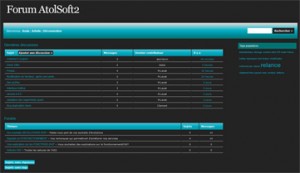Hence, these processes cannot capture every aspect of the okay epigenetic consequences that manage biology
(17) exactly who examined the fresh geometry away from stacks of one or two neighboring legs-partners strategies just like the present in amazingly structures. The latest variation of one’s geometrical variables governing DNA twisting brings an guess of one’s bending powers regarding the specific legs-few procedures. Such as for instance, the brand new means with Xu and you will Olson (18) utilizes knowledge-built dinucleotide action vitality so you’re able to calculate this new bending energy from an effective series threaded toward a great nucleosomal DNA theme. Because of the extremely insightful access best dating sites for Biracial singles to overlapping structural fragments, Lavery and you can colleagues put an all-atom quality physics-mainly based method for the fresh high-throughput modeling regarding DNA–protein-joining sites (19, 20). That it brilliant approach splits the newest software towards a couple of overlapping DNA fragments for each regarding the proteins fragments in which it communicates. This allows large connects become examined during the practical computers date. Software toward nucleosome (20) yielded the new nucleosome-joining choices for your DNA sequenceparison away from overall performance having tests having eukaryotic transcription start web sites try really encouraging (20).
Even in the event sequence created measures (eleven ? ? ? –15) is actually predictive and value-productive, they can’t directly be the cause of any structural information, which is particularly relevant if one is to try to identify the same sequence motifs having line of epigenetic scratches. In addition, newest framework-oriented actions (17 ? ? –20) either believe in mathematical data out-of early in the day experiments (17, 18) and you will lack the information necessary to just take epigenetic transform (age.grams., methylation) or have fun with fragments (19, 20) and so the bodily method is not modeled total.
This method is actually started by the pioneering performs away from Olson mais aussi al
To-break it dependence on identified fresh analysis and you may effectively take epigenetic marks under consideration, i fool around with a protocol you to habits nucleosomal DNA given that an all-atom construction. It involves threading a specific series to the a template build used from the conformational optimisation (21, 22) directed by a nearly all-atom opportunity mode (23) that have implicit solvent design (24). As such, all of our forecast nucleosome occupancies and you can dyad ranks are not biased from the presumptions not in the conventional approximations of this all the-atom empirical force fields (23). While we have fun with an empirical molecular mechanics push job, our approach may be used that have one force industry that may be determined efficiently and can become systematically improved together with our expanding physicochemical expertise in first nuclear relations. Our method try described in more detail into the Fig. step one and you may Fig. S1.
Threading any DNA sequence onto a nucleosome-shaped DNA template. (A) Surface representation of superhelical DNA (backbone in cyan, A in green, C in blue, G in yellow, and T in red) wrapping around the histone core in the nucleosome structure (PDB ID code 1kx5). (B) The representative local sequence S198,305, whose first nucleotide is at position n = 198,305 along the genomic sequence (denoted by Q) of yeast chromosome 14, is shown. To demonstrate the threading protocol (C) a tetranucleotide (4-nt), GTTC is chosen from the oligonucleotide, TCCAGTTCTT located at position 51 of the 147-nt local sequence S198,305. GTTC in a 4-bp structure is shown in dashed box. (C) The two-step design protocol for the chosen tetranucleotide. First, the native sequence of the DNA nucleosome template is converted to a sequence of planes each defined by a root atom (light blue) and three pseudoatoms (orange). Second, the base planes are replaced with bases from the tetranucleotide sequence. As a result of the design protocol, the native (human) DNA is removed and the yeast sequence is added. (D) DNA accommodating the local sequences Sn. The DNA surface is omitted for the region 51–60 that includes the 10-nt oligonucleotide discussed in B. (E) Showing the all atom energy terms used in the calculation. (F) The nucleosome energy E(i) or related occupancy O(i), plotted as a function of the local sequence position (i). The red dot marks the energy at local sequence Sn. The size of a nucleosome is indicated by the brown arrowheads.

